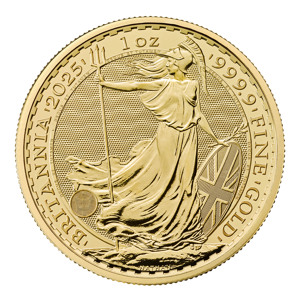Tavex uses cookies to ensure website functionality and improve your user experience. Collecting data from cookies helps us provide the best experience for you, keeps your account secure and allows us to personalise advert content. You can find out more in our cookie policy.
Please select what cookies you allow us to use
Cookies are small files of letters and digits downloaded and saved on your computer or another device (for instance, a mobile phone, a tablet) and saved in your browser while you visit a website. They can be used to track the pages you visit on the website, save the information you enter or remember your preferences such as language settings as long as you’re browsing the website.
| Cookie name | Cookie description | Cookie duration |
|---|---|---|
| tavex_cookie_consent | Stores cookie consent options selected | 60 weeks |
| tavex_customer | Tavex customer ID | 30 days |
| wp-wpml_current_language | Stores selected language | 1 day |
| AWSALB | AWS ALB sticky session cookie | 6 days |
| AWSALBCORS | AWS ALB sticky session cookie | 6 days |
| NO_CACHE | Used to disable page caching | 1 day |
| PHPSESSID | Identifier for PHP session | Session |
| latest_news | Helps to keep notifications relevant by storing the latest news shown | 29 days |
| latest_news_flash | Helps to keep notifications relevant by storing the latest news shown | 29 days |
| tavex_recently_viewed_products | List of recently viewed products | 1 day |
| tavex_compare_amount | Number of items in product comparison view | 1 day |
| Cookie name | Cookie description | Cookie duration |
|---|---|---|
| chart-widget-tab-*-*-* | Remembers last chart options (i.e currency, time period, etc) | 29 days |
| archive_layout | Stores selected product layout on category pages | 1 day |
| Cookie name | Cookie description | Cookie duration |
|---|---|---|
| cartstack.com-* | Used for tracking abandoned shopping carts | 1 year |
| _omappvp | Used by OptinMonster for determining new vs. returning visitors. Expires in 11 years | 11 years |
| _omappvs | Used by OptinMonster for determining when a new visitor becomes a returning visitor | Session |
| om* | Used by OptinMonster to track interactions with campaigns | Persistent |
| Cookie name | Cookie description | Cookie duration |
|---|---|---|
| _ga | Used to distinguish users | 2 years |
| _gid | Used to distinguish users | 24 hours |
| _ga_* | Used to persist session state | 2 years |
| _gac_* | Contains campaign related information | 90 days |
| _gat_gtag_* | Used to throttle request rate | 1 minute |
| _fbc | Facebook advertisement cookie | 2 years |
| _fbp | Facebook cookie for distinguishing unique users | 2 years |
Why The Gold Price Remains Strong in Times of a Crisis

Periods of economic uncertainty often prompt individuals to seek assets that can preserve their long-term purchasing power. Over the past few decades, central banks have routinely responded to recessions by injecting liquidity into the economy, effectively printing money. While this can provide short-term relief, it often comes at the cost of eroding the real value of money.
During the COVID-19 pandemic, this approach reached unprecedented levels, leading to the highest peacetime inflation seen in modern history. By early 2021, consumers in the UK and across Europe began to feel the effects: prices for goods and services surged, with UK inflation reaching a 40-year high of 11.1% by October 2022 – the highest since 1981.
Fiat Currency: A Poor Hedge Against Inflation

Holding cash, whether in savings accounts or at home, remains one of the most common methods of saving. However, fiat money continually loses value due to inflation. In the UK, the Consumer Prices Index (CPI) increased by over 20% between 2020 and 2023, which means that £10,000 saved at the start of the period could now have the equivalent purchasing power of just over £8,000.
This loss is even more significant when considering that inflation figures don’t capture the full picture. Many goods, especially housing, energy, and food, have increased far more sharply than the CPI reflects. The net result: saving in cash guarantees a slow erosion of wealth.
Real Estate: Not Immune to Crashes

Property ownership is often perceived as a “safe” investment in the UK. It provides tangible utility and can generate rental income. However, housing markets are highly sensitive to interest rates. When rates are low, demand and prices rise; but when rates increase, as they have since late 2021, the market can contract sharply.
After a historic boom during the pandemic, UK property prices began to fall in 2023. According to the Nationwide House Price Index, average house prices dropped by over 5% between late 2022 and mid-2023. This is particularly concerning given that many UK mortgages are variable or short-term fixed, meaning borrowers have faced significant increases in monthly payments as interest rates climbed.
In previous downturns, such as 2008, UK house prices fell by around 15%, taking years to recover. This illustrates that property is not immune to downturns and, when leveraged through mortgages, can expose investors to amplified risks.
Stock Markets: High Returns, High Volatility

The UK stock market, like its global counterparts, can deliver substantial returns over time. For example, the FTSE 100 rose from around 3,500 in early 2003 to over 7,500 by the end of 2021. However, equities are also highly volatile. During the 2008 financial crisis, the FTSE 100 lost over 30% in less than a year. Similar declines were seen in early 2020 during the pandemic shock.
Moreover, recent years have shown that stock market performance is increasingly influenced by central bank policy rather than underlying economic fundamentals. The massive stimulus packages during COVID-19 propped up equity markets even as real economies faltered. If interest rates remain high or liquidity tightens, equity markets may once again become vulnerable.
Government Bonds: Safe but Shrinking Returns
UK government bonds (gilts) are traditionally seen as low-risk
However, they have not been immune to the effects of inflation. In recent years, many gilts have offered yields below inflation, meaning real returns were negative. For instance, in early 2021, 10-year UK gilts yielded under 1%, while inflation was running significantly higher.
Investors in government bonds today face a conundrum: either accept a guaranteed loss in purchasing power or take on more risk in search of yield.
Gold: A Proven Store of Value

Against this backdrop, gold has demonstrated its resilience. Since 1990, the price of gold has risen from around $364 per troy ounce to over $1,900 in 2021, a more than fivefold increase. In sterling terms, gold has risen even more sharply due to the depreciation of the pound against the dollar.
Gold tends to perform well during periods of high inflation, economic crisis, and currency devaluation. During the 2008 financial crisis, for example, gold rose by over 25% while equities and property markets slumped. Its value also increased during the pandemic-driven market turmoil of 2020.
Gold’s appeal lies in its independence from government policy. Unlike fiat currencies, it cannot be printed at will. It is also globally recognised, highly liquid, and free from credit risk. While it may not offer income or explosive returns, it provides something arguably more valuable during times of uncertainty: stability.
Comparing Assets During Crises
| Period | S&P 500 | Gold | Silver |
| 2000 – 2002 (Dot – com) | -49% | +12.40% | -14.40% |
| 2007-2009 | -56.80% | +25.50% | +1.10% |
| 2020 (COVID crash) | +23.80% | +11.80% | +52.90% |
As the table shows, gold has historically held its value or appreciated during major market crashes, a trait not shared by stocks or real estate.
Conclusion: Gold in a UK Context
In the UK, as in the rest of the developed world, we are living through an era of chronic currency debasement, driven by low interest rates, aggressive monetary stimulus, and persistent inflation. Over the course of a lifetime, we may experience two or three major financial crises, each one bringing significant shifts in wealth distribution.
While no asset is entirely without risk, gold’s track record as a hedge against inflation, a shield during downturns, and a store of value over generations remains unrivalled. In an increasingly unpredictable financial landscape, gold deserves a central role in any long-term wealth preservation strategy.
















